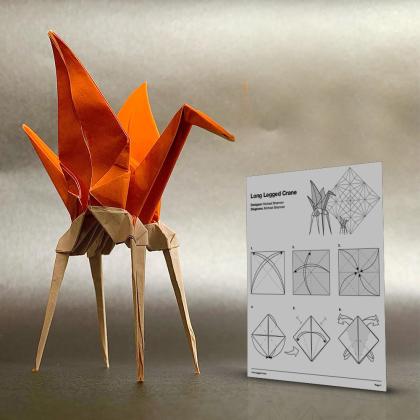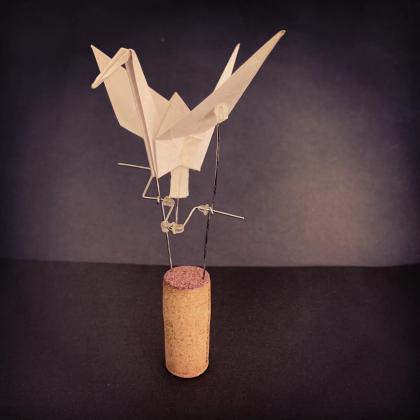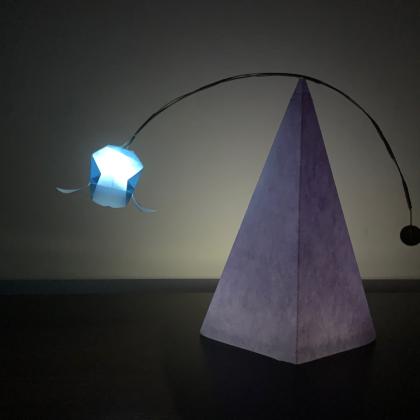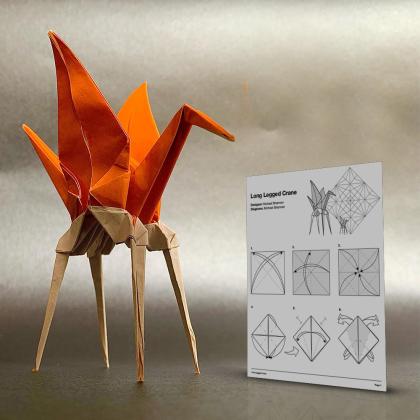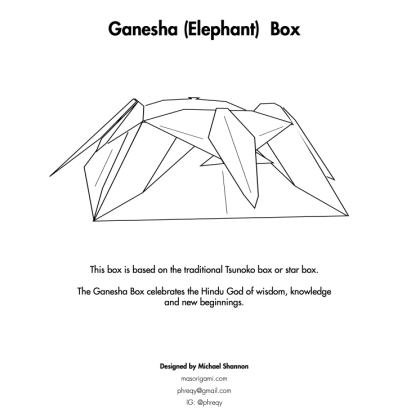Primary tabs
Creator
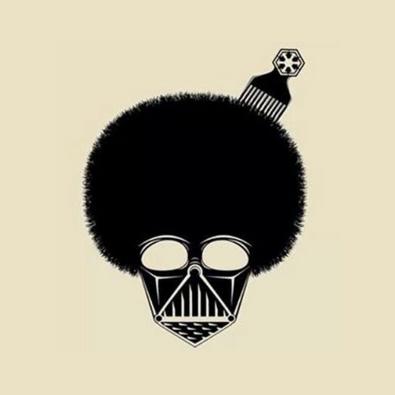
Michael Shannon
Primary tabs
English
Figurative
Money
Boxes
Geometric
Diagrammer (more)
Yes, you may use or teach any of my models for educational purposes only
Philadelphia, PA 19143
United States
About Michael
My journey into the world of origami began when I was around 9 or 10 years old. I had already been making paper airplanes and the standard boats out of letter sized paper when a group of kids at my school showed me how to make a water bomb (balloon) and from that moment I was in love. I immediately learned what the art was called and went to my local library and borrowed as many origami books as I could get my hands on. I clearly remember struggle and frustration the first time I tried to make a simple origami crane without ripping the paper. Once I conquered that model, my thirst for new models and techniques was insatiable.
There are so many things to love about origami. Just like any other art form you are creating something. But unlike any other art form, origami is the only one that is solely transformative in nature. When practicing pure origami there is only one square sheet of paper. There is no glue, no cutting and no adding to the paper. You simply tranform what was once a two dimensional sheet of paper into something amazing.
The other thing I love about origami is the challenge of deciphering the instructions and the struggle to manipulate the paper in ways that seem impossible at first only to work out in the end.
Origami is therapeutic. On a physical level, manipulating paper improves dexterity and eye to hand coordination. I imagine people with impaired motor skills benefiting from origami. On a mental level there is something about the feeling of accomplishment when you complete a model. You can easily disappear for hours at a time, lost in the folds, only to re-emerge to a brighter, lighter world around you.
Along my journey I have realized that while the instructions for origami will allow you to create a model from start to finish, it does not end there. The diagrams and instructions are mearly suggestions on what the final product should look like. It is up to the folder to add a piece of themselves into the final product. This may be in the form of a variation of the final model or the final shaping and sculpting of the end result.
My passion with origami is not so much the final product but rather the journey one takes to arrive at the completed model. There are many models I have folded over and over again both to improve the end result but also to simply experience the sequence of folds again. It's like reading your favorite book or watching your favorite movie over and over.
I am currently designing my own models as well as seeking out super complex models, attending conventions around the world and will begin teaching the art in various ways as my journey continues. And of course, I will continue to practice, in pursuit of the perfect fold.
There are so many things to love about origami. Just like any other art form you are creating something. But unlike any other art form, origami is the only one that is solely transformative in nature. When practicing pure origami there is only one square sheet of paper. There is no glue, no cutting and no adding to the paper. You simply tranform what was once a two dimensional sheet of paper into something amazing.
The other thing I love about origami is the challenge of deciphering the instructions and the struggle to manipulate the paper in ways that seem impossible at first only to work out in the end.
Origami is therapeutic. On a physical level, manipulating paper improves dexterity and eye to hand coordination. I imagine people with impaired motor skills benefiting from origami. On a mental level there is something about the feeling of accomplishment when you complete a model. You can easily disappear for hours at a time, lost in the folds, only to re-emerge to a brighter, lighter world around you.
Along my journey I have realized that while the instructions for origami will allow you to create a model from start to finish, it does not end there. The diagrams and instructions are mearly suggestions on what the final product should look like. It is up to the folder to add a piece of themselves into the final product. This may be in the form of a variation of the final model or the final shaping and sculpting of the end result.
My passion with origami is not so much the final product but rather the journey one takes to arrive at the completed model. There are many models I have folded over and over again both to improve the end result but also to simply experience the sequence of folds again. It's like reading your favorite book or watching your favorite movie over and over.
I am currently designing my own models as well as seeking out super complex models, attending conventions around the world and will begin teaching the art in various ways as my journey continues. And of course, I will continue to practice, in pursuit of the perfect fold.
Diagramming Capabilities
I have over 2 years experience creating diagrams. I prefer to use Affinity Designer and Affinity Publisher.
Diagrams
